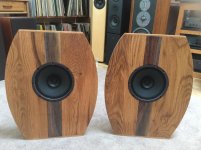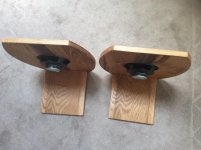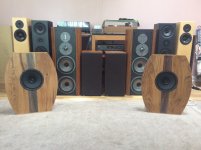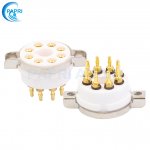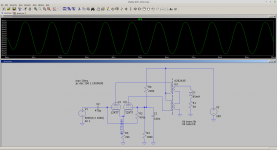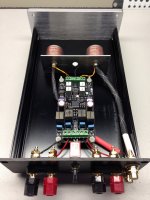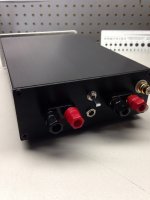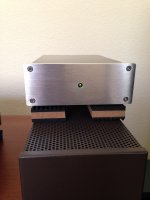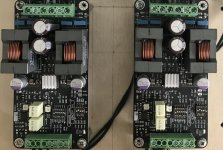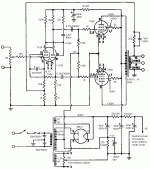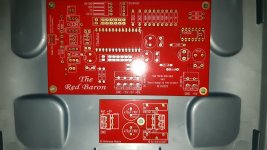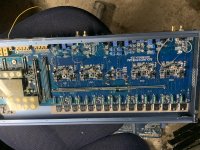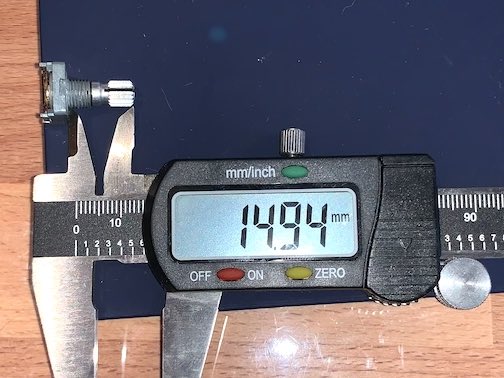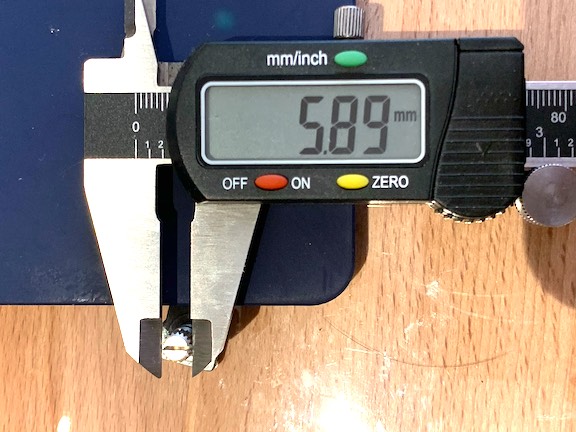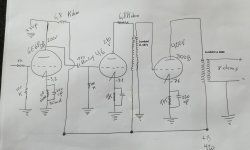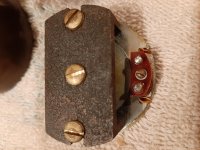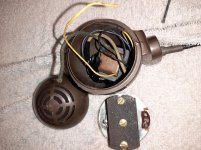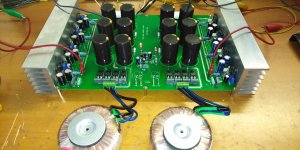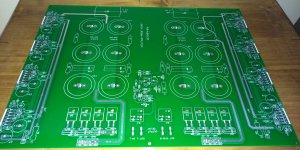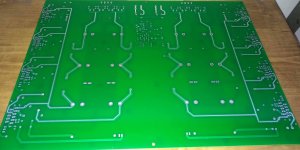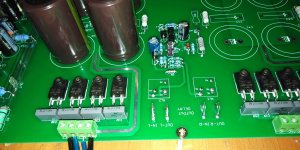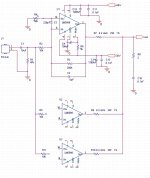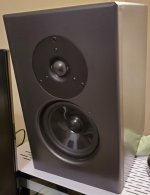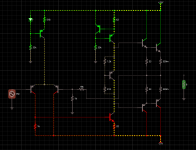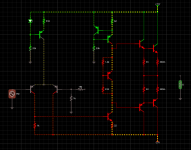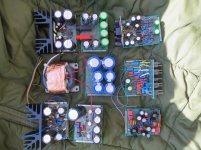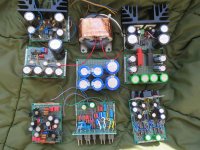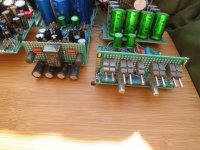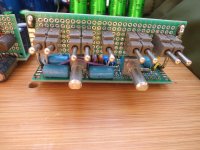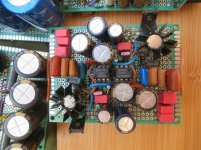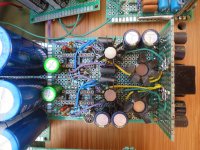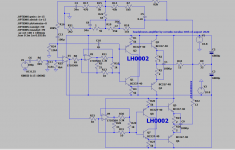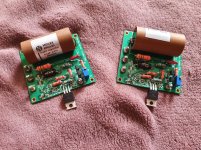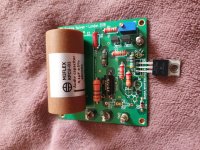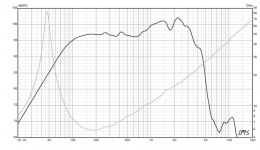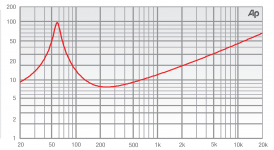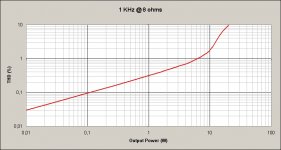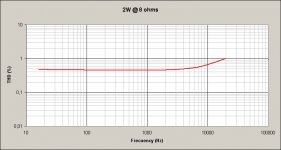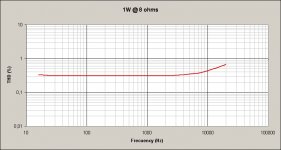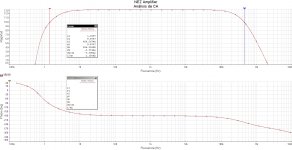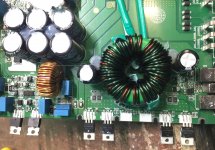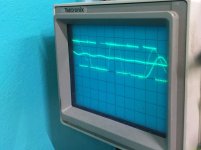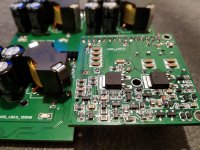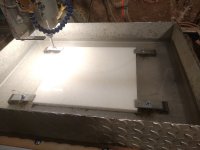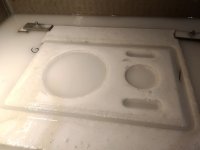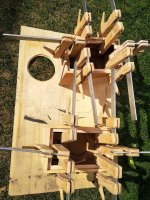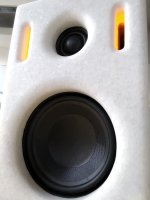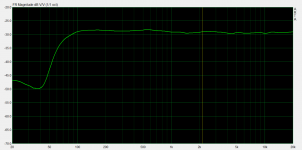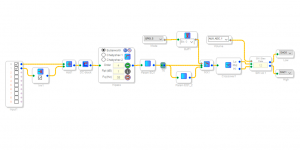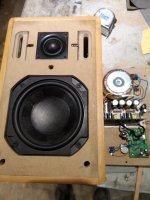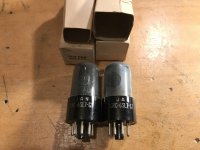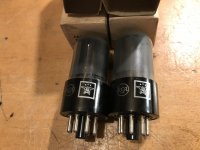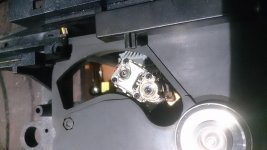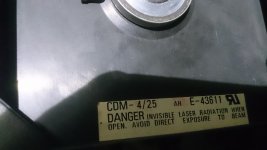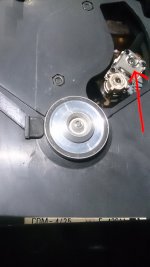So just got hold of a Marantz CD273, very cheap, DOA (wouldn't do anything when switched on). Turned out to be the voltage selector. I decided to take it out completely and hardwire transformer to 240V. Immediately the player was back to life. BUT: it wasn't recognizing the CD.
So, first things first and safety always: made a little movie of the laser with my mobile phone. Argh... NO red dot! But I've heard, read and seen enough related to the infamous blue C2103 33uF Philips cap so I stayed calm and got the soldering iron and exchanged the cap with a fresh normal 33uF radial cap. Hooked it all up and tried again... tada! red dot was there!! 😀
Inserted CD, got TOC a couple of times, other times it failed. Playback was failing at the middle of disc. So, now that laser was back to life it was time to do the usual servicing - cleaned the lens, also the inner lens, was all very dirty. There I had two surprises I didn't have before with any CDM mechanism: the screw on this one has a nut on the other side which always falls out and is a real pain to put back in! The other surprise was a little thin whitish plastic piece that suddenly appeared no my desk as a left over piece when lens case was back assembled together. I didn't like that. And yes, the result was bad: although lens was shiningly clean and laser working fine (I also adjusted laser voltage, was at 65mV, put it back to perfect 50mV), the mechanism was making a weird noise when reading past track 1 and started to fail and skip badly at every CD from the middle onwards. I decided to investigate that little whitish plastic thing. I reopened the lens case again and discovered another of these plastic things beneath the upper half. So I figured the other one would be on top, yes, there was a glue mark, it had simply fallen off due to age! 😱 I got superglue and put a real small drop and glued the plastic thing back to its place. Reassembled (with the nut falling out so many times...) and tested. Incredible, the noise was gone, how's that even possible, that plastic thing can't weigh more than 0,5 g??? I'm not sure if it was the cause, but the problem was gone. Now, player was playing normally most CDs, but failing sometimes suddenly towards end of disc or not reading TOC. Audio was great, btw, even though I haven't changed caps on mainboard yet.
Decided to change remaining electrolytic caps on CDM servo board to new ones. Then noticed that it's an older version of CDM2-board, with the focus potentiometer. So had a look at service manual, states that this has to be adjusted measuring 400mV on a certain test connection (across a cap). I found out that this is a real tough adjustment (I guess they had a special test disc) as the voltage fluctuates! In time and depending on where the track is! So, I ended up doing a lot of trial and error and managed to find a kind of sweet spot, it's not really 400mV, but it fluctuates between 220 and 450mV, depending on disc poisition. Now it was working nicely, really quick TOC (about 2 secs) and track change, no skipping during playback at all, silent laser while playing, but still sometimes it was failing to read TOC or simply stopped playing when close to end of disc. But only rarely. Left it playing a whole CD (a CD-R), which was played flawlessly and sounded great.
I decided to repair the drawer (was stuck and belt was almost gone), put a replacement belt and lubricated all gears with silicone lubricant, got it back working, then also did a good clean to the whole CDM mechanism, that's when I noticed that after all seems to be a CDM4??? Now this is weird. I once repaired a Philips CD150 which had a CDM4 laser fitted to a CDM2 mechanism and drive, as probably the laser had died. It had the update of components that's described in service manual but the label clearly stated CDM2. Also, the lens cover didn't have that horrible nut falling out. This one, on the other hand, has the oldest CDM2 servo board (the one with focus adjust), the laser really looks like CDM2 to me (but might be mistaken, as board does have some components soldered in afterwards), but the drive tray has label stating it's a CDM4??? Also the player supposedly is CDM2 originally, as can be found on net. May I assume this has been repaired with a new cdm4 drive which is a mix of cdm2 servo board and cdm2 or 4 laser? That doesn't make much sense, does it? Or did they simply put the sticker of new CDM4 laser on the drawer which is the same as original, from CDM2?
Now comes the most interesting part: after all this, I decided to further test it. Now it never failed again - read every CD I tried, even old blue CD-R with quite a few scratches and very badly scratched pressed CD. Great!! But why was it failing occasionally before?
Maybe some parts, like radial servo, needing to be used, to move, so to get "free" again after having sit non used for so long time? I did in fact noticed a slight "eek" when radial arm was moved.
Or can this be another case of "warm-up"? Maybe the infamous griplets which were the cause of failure reading discs in the cd150 I serviced? Yes, this also has them on mainboard. It's very similar to Philips CD-150, although with much nicer front panel and display and digital out.
I'm going to put new electrolytics in main board and take the opportunity to resolder all the griplets. Hopefully no more random fails anymore ever then.
Now that it's ressurected, and another laser saved from erroneously being diagnosed as dead, I'm really motivated to do some simple and inexpensive mods (dedicated 5V for SA7220, cleaner supply for DAC, new opamp for output stage and audio grade caps in audio path) and then in the end sell it, as I already have a nice TDA1541 based player at home.
When all is done, I'll post more photos also of the rest of the player and final results. In the meantime, would be interesting to hear opinions about these random fails it had and which magically seem to have gone...
Also any additional suggestions of simple and inexpensive mods are welcome, thanks!
Attached photos show that plastic thing which had fallen off marked with red arrow and also sticker saying cdm4. Btw, the metal plate of the spindle motor where the CD sits on, has some kind of "residue" at its edges (is dark grey, almost black, easy to see in picture), is this "dirt" and should I scrap it off carefully or is this some kind of layer to better grip the CD which has deteriorated so I really shouldn't touch it at all??
